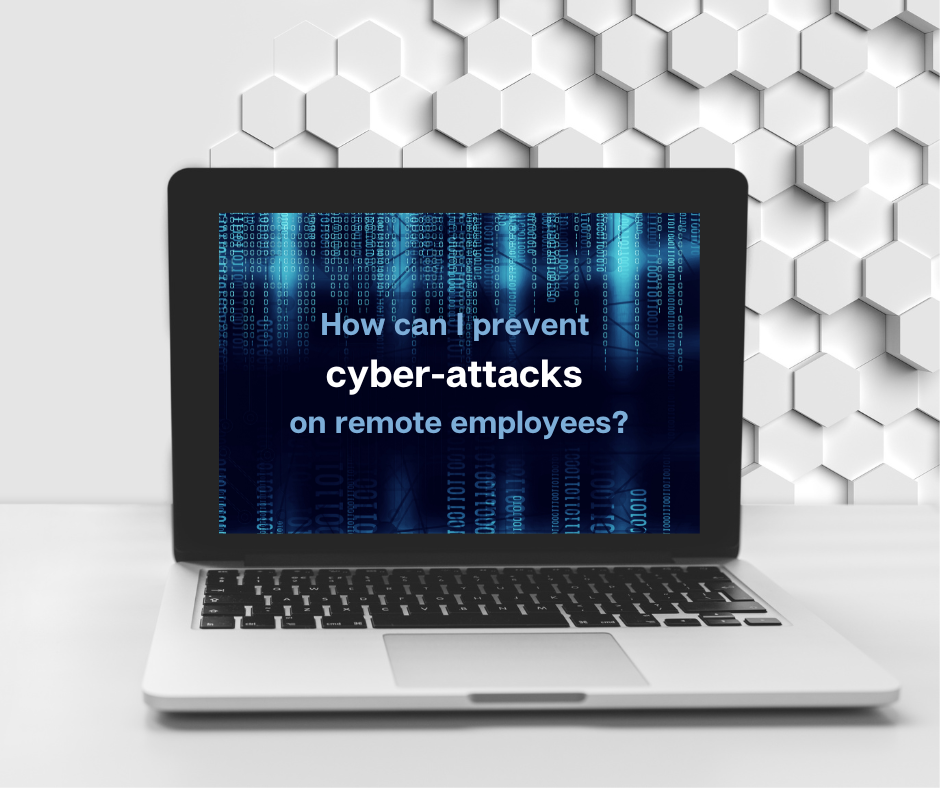
How can I prevent cyber-attacks on remote employees?
The COVID-19 pandemic brought us many changes to everyday life and one of these was working from home. As many companies are adopting hybrid working or remote working as a permanent operational standard, we look at how this might affect your business, in particular cyber-security.
Cyber-threats to monitor when working from home
Hackers have been assaulting businesses since the first computer was invented, always trying new methods of gaining critical information. Depending on the size of the organisation, it may receive dozens or thousands of hacking attempts each day. These attempts are typically brushed aside by IT security teams and firewalls. However, with employees working from home, those protections aren’t as guaranteed. Cyber insurance, or data protection insurance, is a type of insurance cover that protects you and your data from any potential threat, and can protect you and your business from the impacts caused by damage or loss.
Cyber-threats are made worse when working remotely, especially if they conduct business on personal devices or don’t connect to a secure network. The following are some of the most common cyber-threats facing individuals:
Phishing and vishing
This is when someone attempts to gain personal information like computer passwords or other data. From phishing and vishing, hackers and scammers will impersonate a legitimate company and send fake emails to solicit this information, typically with a false threat.
Malware
Malware is a virus that’s disguised as a harmless program, email attachment or link. There are numerous tasks a malware virus can undertake such as storing password data, tracking website activity or even downloading personal files.
Brute force attacks
This is a cruder cyber-threat as a hacker attempts to login to an account many times. These attempts work most often when individuals reuse usernames and passwords across different accounts. It’s a quick and easy way for a hacker to access many accounts from one set of credentials.
How can you help protect remote workers from cyber-attacks?
There are five ways you can help protect your home workers from cyber-attacks, these include:
Behavioural analytics tracking software
With analytics tracking software, the program would be able to spot when a user is displaying abnormal computer usage, this could include accessing certain files or large data transfers.
Automated threat detection software
Ensuring that antivirus software is installed and up-to-date on all remote workers computers is a critical step in the fight against cyber-crime. Automated threat detection software often works in conjunction with other efforts, such as behavioural analytics.
Cyber Essentials Certification
Organisations that achieve Cyber Essentials certification are shown to have a significantly better chance of preventing and recovering from a malicious cyber incident. For more information on how to achieve certification go to About Cyber Essentials – NCSC.GOV.UK
Comprehensive work-from-home guidelines
Having clear guidelines from the start can help safeguard your remote workers from cyber-attacks. These could include only using a work-provided laptop at ‘work’ locations… e.g. not working in a café which could have an unsecured network.
Employee education
Helping your staff to understand the basic cyber security tactics and spot basic cyber threats will help keep your team more protected. Spotting a phishing email, scam caller and not reusing the same login credentials are highly beneficial in the fight against cybercrime. Training and education of all staff will aid your cyber-security strategy.
Contact the Sutcliffe & Co Team for more cyber tips and other workplace guidance on 01905 21681 or alternatively email Enquiries@sutcliffeinsurance.co.uk.
